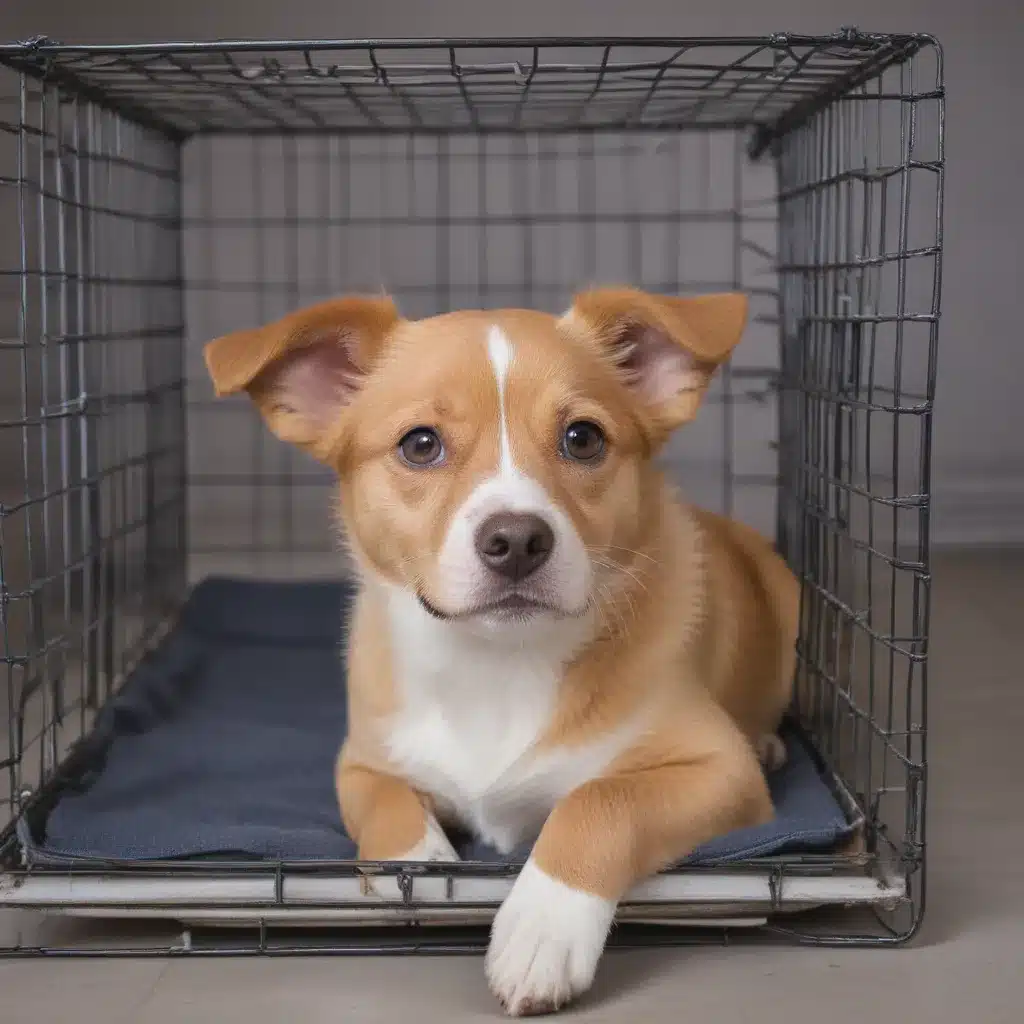
The Crate Conundrum
As a proud dog parent, I know the struggle of trying to create a well-behaved, well-adjusted furry companion. It’s a delicate balance of love, patience, and the occasional trial-and-error. One of the most important – yet often misunderstood – tools in our training toolbox is the humble dog crate.
Now, I know what you’re thinking – “Crate? But that’s like putting my pup in prison!” Well, my friend, let me tell you, crate training is anything but cruel. In fact, it can be a game-changer for both you and your four-legged friend. Let me share my own crate training journey and some hard-earned wisdom to help you achieve crate training success.
The Den Dweller
When I first brought my pup Biscuit home, I have to admit, I was a little hesitant about the whole crate thing. It just seemed so… confined. But then I learned something that changed my perspective entirely – dogs are natural den dwellers. In the wild, canines seek out small, enclosed spaces to call their own, a safe haven where they can rest, relax, and escape the chaos of the outside world.
As the American Kennel Club explains, a crate can provide that same sense of security and comfort for our domesticated pups. It’s their very own personal space, a sanctuary where they can retreat when they’re feeling overwhelmed. And when introduced properly, most dogs actually come to love their crate, seeing it as a cozy, comfortable retreat rather than a prison.
Choosing the Right Crate
Of course, not all crates are created equal. As the Central California SPCA advises, it’s important to choose the right crate for your pup – one that’s the perfect size, material, and design to suit their needs and preferences.
Metal wire crates are a classic choice, offering excellent air flow and easy collapsibility for storage. Plastic crates, on the other hand, provide a more enclosed, den-like environment, perfect for pups that get anxious in more open spaces. And for the adventurous pups, soft-sided fabric crates are a great option for travel and on-the-go.
When it comes to size, the rule of thumb is to find a crate that’s just big enough for your dog to stand up, turn around, and lie down comfortably. Any larger, and you risk your pup using one end as a bathroom and the other as a sleeping area – not exactly the desired outcome!
Building the Positive Association
Okay, so you’ve got the perfect crate – now what? The key to crate training success is all about building a positive association in your pup’s mind. As the experts at How to Train a Dream Dog suggest, start by making the crate a cozy, comfortable, and irresistible place to be.
I like to think of it as doggy bedtime at a five-star resort. I’ll toss in a fluffy blanket, their favorite chew toy, and maybe even a frozen Kong filled with peanut butter (their absolute weakness!). The goal is to create an environment that’s so enticing, they’ll practically be begging to curl up inside.
And don’t forget the all-important positive reinforcement. Every time Biscuit trots happily into his crate, he gets showered with praise, pets, and maybe even a tasty treat. This helps cement the idea that the crate is a place of comfort, security, and good things to come.
Gradual Introductions
Of course, crate training isn’t something that happens overnight. It’s a gradual process of slowly acclimating your pup to their new den. The Humane Society recommends starting with short, positive sessions where you simply leave the crate door open and let your pup explore at their own pace.
Once they’re comfortable going in and out, you can begin closing the door for brief periods while you’re still nearby. Slowly but surely, you can increase the duration, eventually working up to longer stretches where you leave the room entirely. The key is to always return before your pup starts to panic or whine – you want to reinforce the idea that the crate is a safe, secure place, not a punishment.
Overcoming the Obstacles
Now, I know what you’re thinking – what if my pup just won’t take to the crate? Trust me, I’ve been there. When I first brought Biscuit home, he wanted nothing to do with his new crate. He would whine, cry, and even throw himself against the bars in protest.
But as the r/puppy101 community shared, the key is to persist with patience and positivity. It may take weeks or even months, but if you stick with it and keep those positive associations strong, your pup will eventually come around.
And remember, every dog is different – what works for one pup may not work for another. If you find your furry friend is truly averse to the crate no matter what you try, don’t force it. There are other management tools, like baby gates or exercise pens, that can help keep your home safe and your pup secure.
A Lifelong Benefit
At the end of the day, successful crate training is all about creating a safe, comfortable space for your pup to call their own. And let me tell you, the benefits extend far beyond just keeping your house in one piece. A well-crate-trained dog is a confident, calm, and well-adjusted companion – and that’s exactly the kind of furry friend I want by my side.
So, if you’re ready to take the plunge into crate training, just remember to be patient, persistent, and above all, positive. Your pup will thank you – and so will your favorite pair of shoes. Happy crate training, fellow dog lovers! And don’t forget to visit ihavedogs.com for all your canine care and adoption needs.

